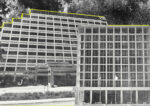Chicago has been grappling with record-high office vacancies for years now, and nowhere is that more apparent than in the suburbs.
The suburban office vacancy rate rose to 30.2 percent in the fourth quarter, setting a record, Crain’s reported.
The year-end figure marks an increase from 29.7 percent in the third quarter and 27.9 percent in the fourth quarter of 2022. The suburban vacancy rate was at 22.1 percent when the pandemic started.
These rising vacancies reflect a four-year struggle since the pandemic catalyzed the remote-work era, devastating office property values and prompting a wave of foreclosures.
The trend of downsizing office spaces persists, particularly among larger corporations, as tenants assess their needs. JLL International Director Andrea Van Gelder predicts the trend will continue this year, with many downsizes still on the horizon.
For companies seeking office space, the soaring vacancy rate presents opportunities for negotiation, as landlords are willing to offer generous concessions like free rent and lease term flexibility. Yet, the availability of updated buildings with landlords willing to invest in modern amenities is limited, constraining tenants’ options.
The landscape is further complicated by distress among landlords and lenders foreclosing on properties. While distressed properties have typically sold at a discount, some lenders are now opting to invest in long-term plans, reflecting the challenging market conditions.
Downsizes among major tenants during the fourth quarter underscore the struggle to stabilize rent rolls. Experian, Hartford and Sikich reduced their office footprints significantly, contributing to a negative net absorption of about 612,000 square feet in 2023, the outlet reported.
To alleviate the oversupply, efforts are underway to repurpose struggling or vacant office properties. In Skokie, for instance, GW Properties has a $90 million plan to turn the 355,000-square-foot Old Orchard Towers office complex into 245 apartments.
—Quinn Donoghue
Read more



